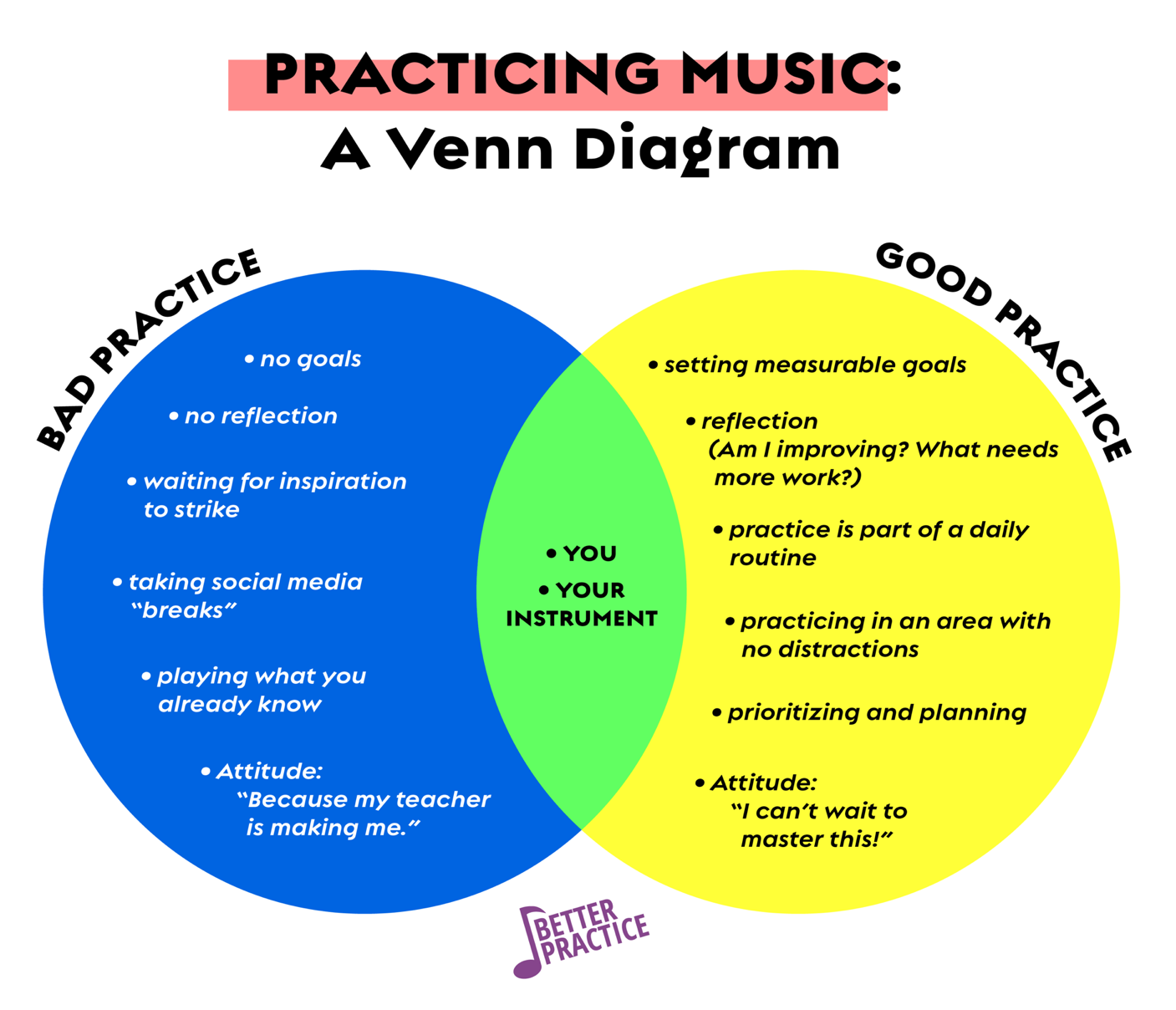Here’s a concise diagram to show you exactly what you should and shouldn’t be doing when you practice:

1. Goals
Practice smart! It doesn’t matter if you’re practicing 40 hours a week if you’re doing it aimlessly. Create measurable checkpoints that let you know if you’re moving in the right direction! For example: change “Play this scale 10 times” to something more like “Play this scale 4 times up and down at 140bpm”. Now, it goes from a simple yes/no task to being able to evaluate what you need to work on (the speed? a specific scale direction? consistency?).
You should set longer-term goals first (like weekly – what do you want to achieve by the next lesson?) then break them up into smaller daily goals for each practice.
2. Reflection
An important part of practice is being aware. Be sure to check in with yourself constantly, asking yourself: “Am I improving? What needs work?” and then setting appropriate goals and plans to improve those areas. This article includes a checklist of questions you should be asking yourself while you practice.
3. Routine
Professionals don’t wait for the perfect moment to begin a project; they just get to work. You might be waiting to get into the perfect, motivated practicing mood where you’re super productive. But let’s be real: you’re not going to find that motivation every day. You’re actually doing yourself a disservice by waiting around and procrastinating. What you can do, though, is to create a habit of practicing daily. Habits can be very powerful if used for good! Check out this article on a foolproof way to create a habit and stick to it (perfect for those New Year’s resolutions too).
4. The practice space
Make your practice space be its own thing. It shouldn’t be a play/practice/work space all in the same place. This is especially true for kids, many of whom have their keyboards set up right in the middle of the toy room! If they associate that room with playing, then it’s going to be terribly hard to keep their focus on practicing when they’re aware of all the toys around them. Parents, watch this short video (1 min) on 3 ways to get your child practicing more.
For me, my downfall is having my practice space too close to my work space. If I turn my head around to grab a book, I often see something that needs work, and I suddenly start thinking about that work and lose my train of thought in practicing. A big part of practicing is keeping momentum, so free your space of distractions as much as you can and keep the ball rolling!
5. Prioritizing
There’s a difference between playing and practicing. There’s nothing wrong with playing songs you know to warm up and review, but that should be a smaller portion of your practice session; you won’t improve if you’re only playing what you already know. Make sure to prioritize your time, especially if it’s limited, to practice what needs to be practiced the most.
Teachers, this article goes over (in detail!) how you can help your students plan practice for the week.
6. Attitude
View every assignment as an opportunity to master a new skill. If you don’t immediately know what that opportunity is, find it! Sometimes I had to learn a song that I thought was absolutely boring – but I find things like “This will help with my left hand coordination”, or even to just view it as a great warmup to keep my hands in shape. Teachers, don’t forget to explain each assignment and what skills the student will gain from it – it helps a ton with motivation!
Make all of your practices GOOD practices. It’s easy to practice better with Better Practice.